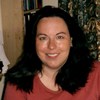Problem Solver
Ann Feuerbach

I believe that all products are composed of three aspects: attribute, actions and society. Invention and Innovation is where nature and culture meet. It is a combination of the "laws of nature" and a given cultures understanding of those laws. Society/culture also dictates what actions are appropriate and which attributes are desirable.
Areas Ann Feuerbach is Knowledgeable in:
Appropriate technology. Understanding how culture and society affect innovation, production, distribution, consumption and disposal of products and by-products.
Creative problem solving. I understand how preconceptions hinder innovative thinking.
Creative problem solving. I understand how preconceptions hinder innovative thinking.
Techniques Ann Feuerbach Uses:
Asking why and why not. What is wrong with the current solution. Thinking in opposites. Questioning peoples preconceptions. I break down products into their attributes, the actions which occur during the products life, and the social-cultural dynamics associated with the product to identify the problem and test solutions.
Ann Feuerbach's Problem Solving Skills:
- forensics
- ferrous metallurgy
- appropriate technology
- archaeological scientist
- creative problem solving
- art and archaeological conservation
- metallography
- petrology
- understanding the role of culture in innovation and acceptance of new products
- materials characterization
- corrosion
Ann Feuerbach's Problem Solving Experience:
- I developed a method of conserving and consolidating wet medieval window glass using a mixed ethanol and acetone solvent solution. The method was based on the fact that the polymer Paraloid B-72 precipitates out of solution in high concentrations of ethanol. The method allowed the polymer to remain inside the cracks and not precipitate to the surface, as was found when just acetone was used.
- I am currently researching the ways in which culture affects innovation. For example, a cheeseburger would not have been invented in a jewish community because they won't mix meat and cheese. Not a East Asian community because many are lactose intolerant. It was invented in the US when it did for social and economic reasons as well (Zietgeist etc)
- I developed a new inexpensive method of polishing priceless art and archaeological objects for metallurgical and petrological characterization, which requires no sample removal.
- I have "cracked the code" of the history of the manufacture of crucible Damascus steel (aka wootz, pulad). Great scientists have been stumped by the material for over 500 years. The answer lies in the way the ancient and modern metallurgists and blacksmiths "think" of the steel in very different ways.
